Key takeaways:
- Prime lenses excel in image quality and low-light performance, encouraging intentional composition and enhancing connection with subjects.
- Zoom lenses offer versatility and convenience, allowing photographers to adapt quickly to changing scenes without switching lenses.
- Choosing the right lens depends on individual photography needs, budget, and the importance of testing lenses before purchasing.
- Prime lenses can encourage creative thinking by prompting movement to frame shots, while zoom lenses provide flexibility in dynamic environments.
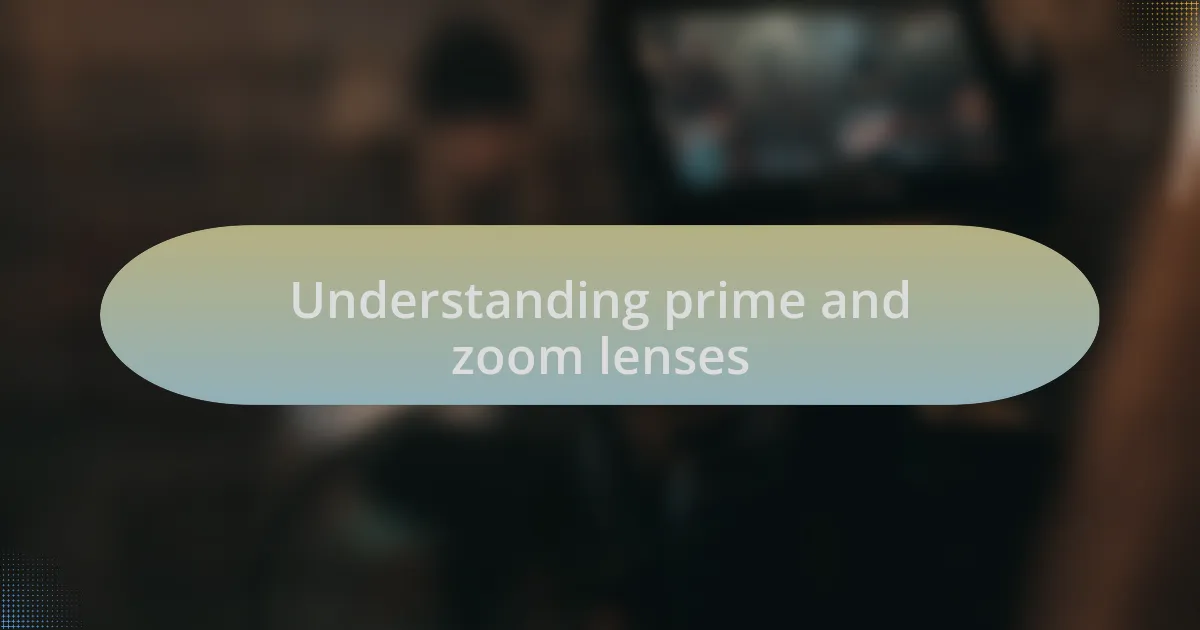
Understanding prime and zoom lenses
When it comes to understanding prime and zoom lenses, I’ve found that each has its unique charm and functionality. Prime lenses, which have a fixed focal length, often boast superior image quality and wider apertures, allowing for stunning low-light performance. I remember my first prime lens experience; it transformed my night photography, capturing rich details that left me in awe.
On the other hand, zoom lenses offer incredible flexibility, enabling you to cover various focal lengths without switching lenses. I can’t count how many times I’ve been on an outdoor shoot and wished for that versatility. Having a zoom lens allowed me to quickly adapt to changing scenes, from capturing a wide landscape to zooming in on a distant subject without missing a moment.
Ultimately, the choice between prime and zoom lenses boils down to your photography style and needs. Do you crave the sharpness and low-light capabilities of primes, or do you prefer the convenience of zooms for unpredictable shooting environments? Reflecting on my journey, I’ve learned that picking the right lens can profoundly affect not just the outcome of a shot, but also the experience of capturing it.
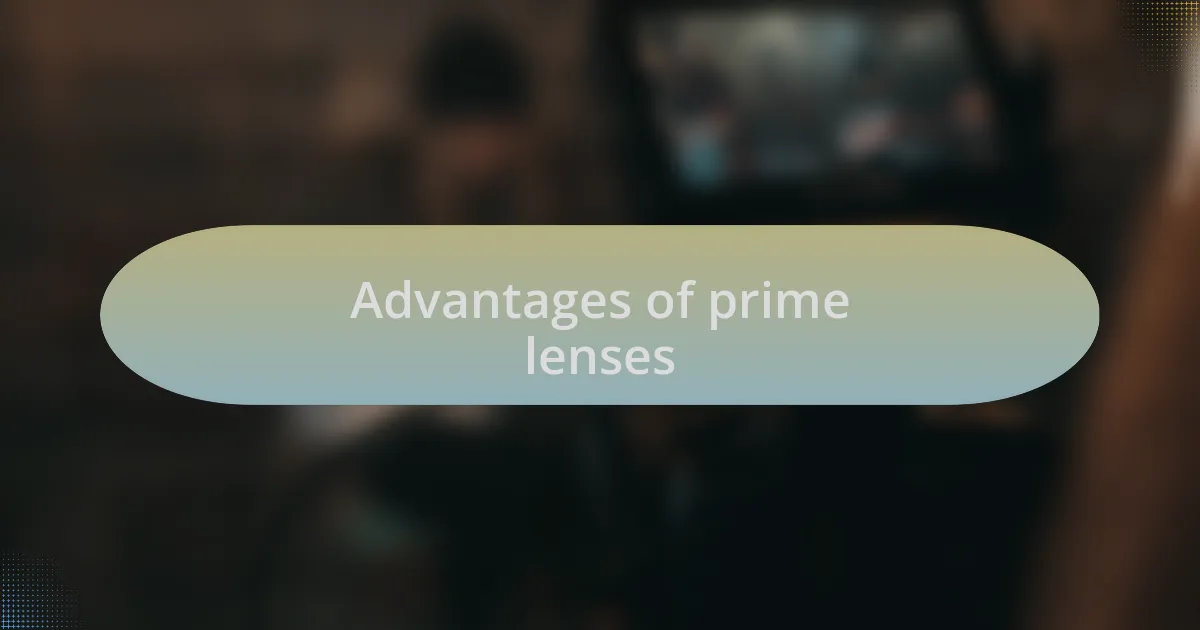
Advantages of prime lenses
Using prime lenses has truly been a game changer for my photography. One of the standout advantages is how they encourage a more intentional approach to composition. When I switched to a prime lens, I found myself moving around more, physically positioning myself to frame the shot perfectly. This process not only enhanced my photography skills but also deepened my connection with my subject matter.
Another significant benefit is the extraordinary sharpness prime lenses provide. I recall a particular outdoor shoot at sunrise, where the details in the clouds and the vibrant colors of the landscape jumped out in ways I had never seen before. That clarity made the entire experience feel richer, almost as if I was witnessing the moment through a new lens—quite literally!
Additionally, the wider apertures of prime lenses have transformed my low-light photography. I still remember the first time I captured a street scene at dusk, with beautiful bokeh softly framing my subject. The ability to shoot at a lower ISO while maintaining image quality has not only expanded my creative options but also boosted my confidence in challenging lighting situations. Doesn’t it feel rewarding to explore photography without the limitations that often come with lower light?
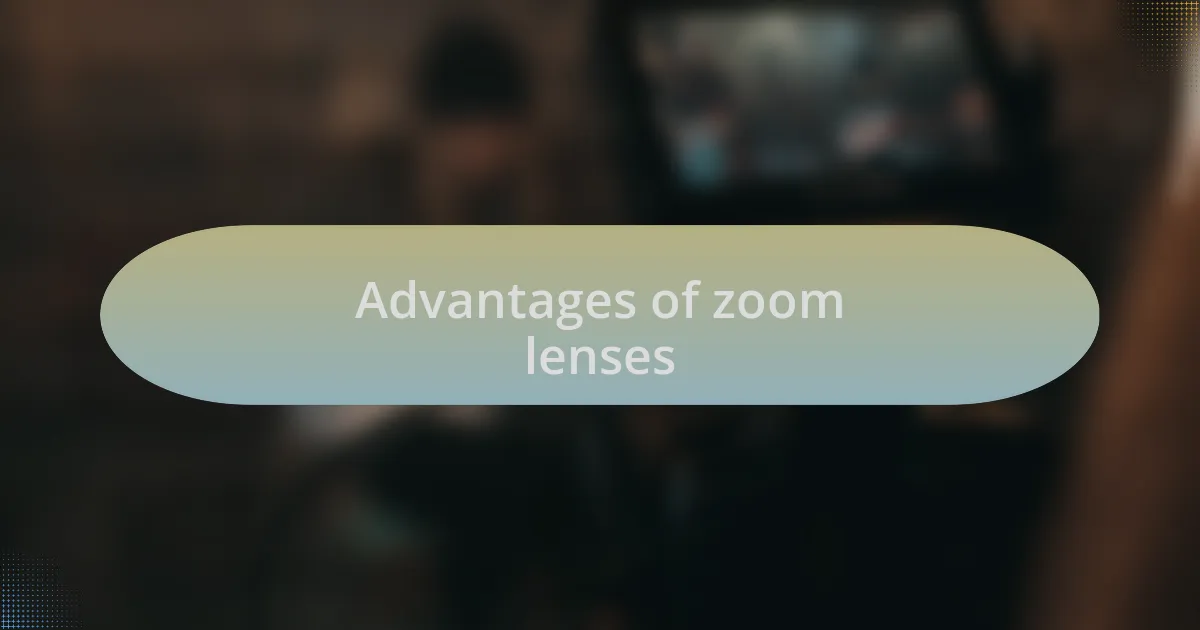
Advantages of zoom lenses
When it comes to zoom lenses, one of the greatest advantages is their versatility. I remember a day at a bustling street market where I had my zoom lens attached. I could effortlessly switch between wide shots of vibrant stalls and tight portraits of artisans, all without missing a moment. This adaptability allowed me to capture various perspectives without the hassle of changing lenses constantly. Isn’t it freeing to have that flexibility right at your fingertips?
Moreover, I find the convenience of having multiple focal lengths in one lens incredibly appealing, especially during travel. On a recent trip abroad, I was able to pack lighter by bringing just one zoom lens instead of several primes. This not only saved me space in my bag but also allowed me to be more spontaneous. Who wouldn’t want to seize unexpected photo opportunities without being weighed down?
Lastly, zoom lenses can be incredibly helpful in dynamic shooting environments, like weddings or sports events. I recall photographing a friend’s wedding, where I could quickly zoom in on the couple during their vows and then out to capture the reactions of the guests. This capability to react quickly made all the difference in documenting those fleeting, precious moments. Doesn’t it feel satisfying when you can capture the entire story unfolding around you?
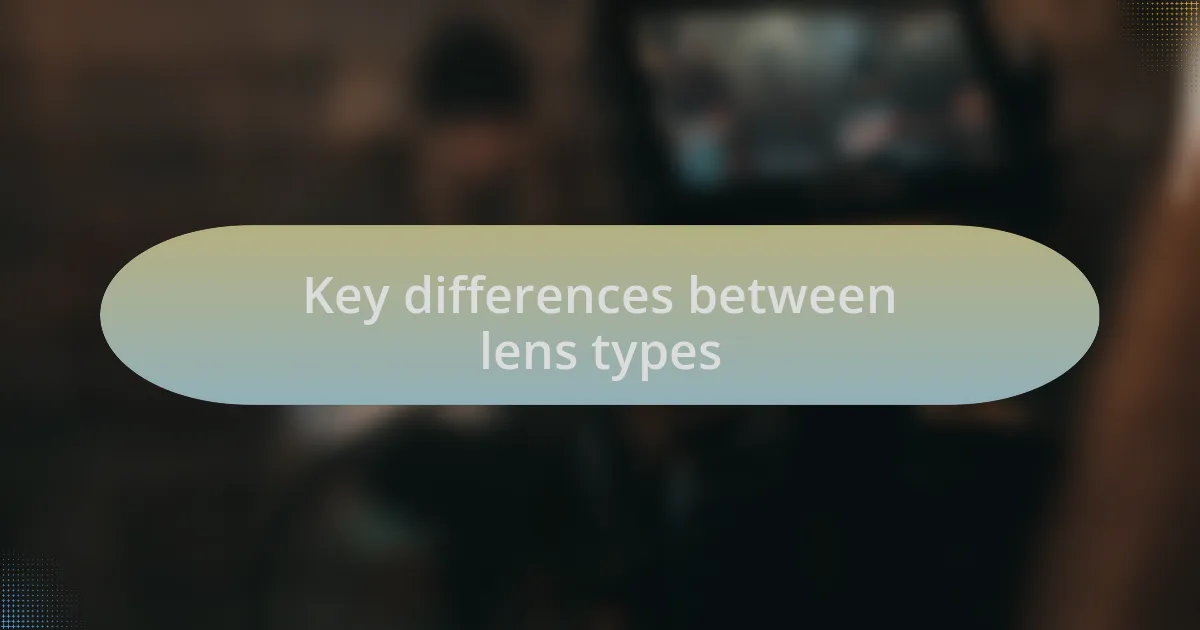
Key differences between lens types
When comparing prime and zoom lenses, one key difference lies in image quality. In my experience, prime lenses often outperform zooms when it comes to sharpness and clarity. I vividly remember using a prime lens during a sunrise photoshoot where the details in the landscape were astonishing. It made me appreciate how these fixed focal lengths can deliver that extra level of optical excellence.
On the other hand, zoom lenses meet a different need regarding focal range. I recall attending a wildlife photography event where having a zoom lens allowed me to capture a distant eagle in flight without disturbing its natural behavior. The ability to adjust the focal length on the fly in such scenarios is invaluable. Why carry an array of prime lenses when a single zoom can handle various distances so effectively?
Finally, there’s the consideration of creative limitations. With a prime lens, I often find myself thinking outside the box, as I need to move my feet to frame the shot perfectly. One evening, I took a stroll through a bustling town square with a prime lens, and it pushed me to explore angles and perspectives I might not have considered with a zoom handy. Isn’t it interesting how sometimes, constraints can lead to more creative outcomes?
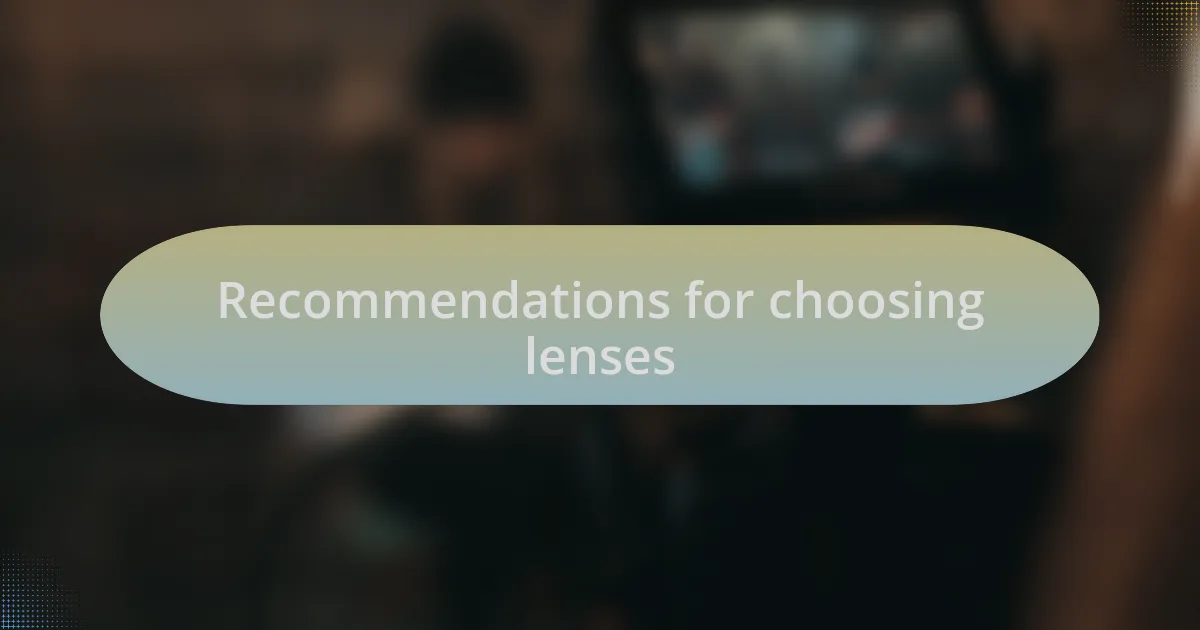
Recommendations for choosing lenses
When it comes to choosing lenses, I recommend first assessing your specific needs. For instance, if you’re often shooting in low-light conditions, a prime lens with a wider aperture can truly transform your photos. I remember a captivating night market where my fast prime lens let me capture the ambient glow of lanterns, creating a magical atmosphere on film. What kind of scenarios do you find yourself in most frequently?
Budget is another vital factor in lens selection. I learned this the hard way when I invested in a high-end zoom lens without considering how often I’d use its full capabilities. It’s essential to find a balance; sometimes, a couple of versatile primes may serve you better than a single expensive zoom. Have you thought about what fits your photography journey best?
Lastly, don’t overlook the importance of testing lenses before making a purchase. I recall visiting a camera shop and playing around with different lenses. The tactile experience of holding them, seeing how they felt in my hands, and understanding their weight truly influenced my decisions. Try renting or borrowing before you buy—it can provide clarity that specs alone can’t! How do you feel about diving into that experience?